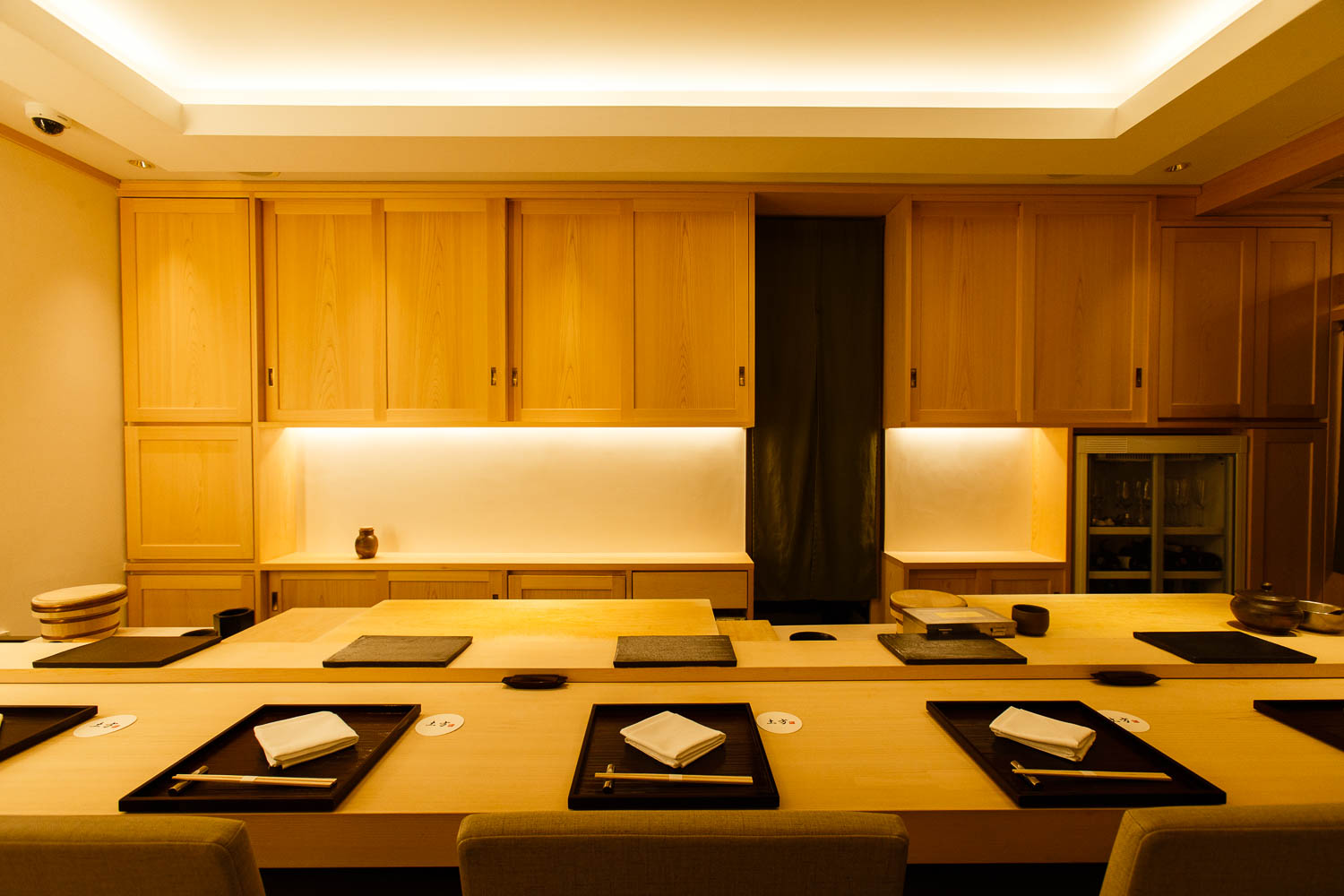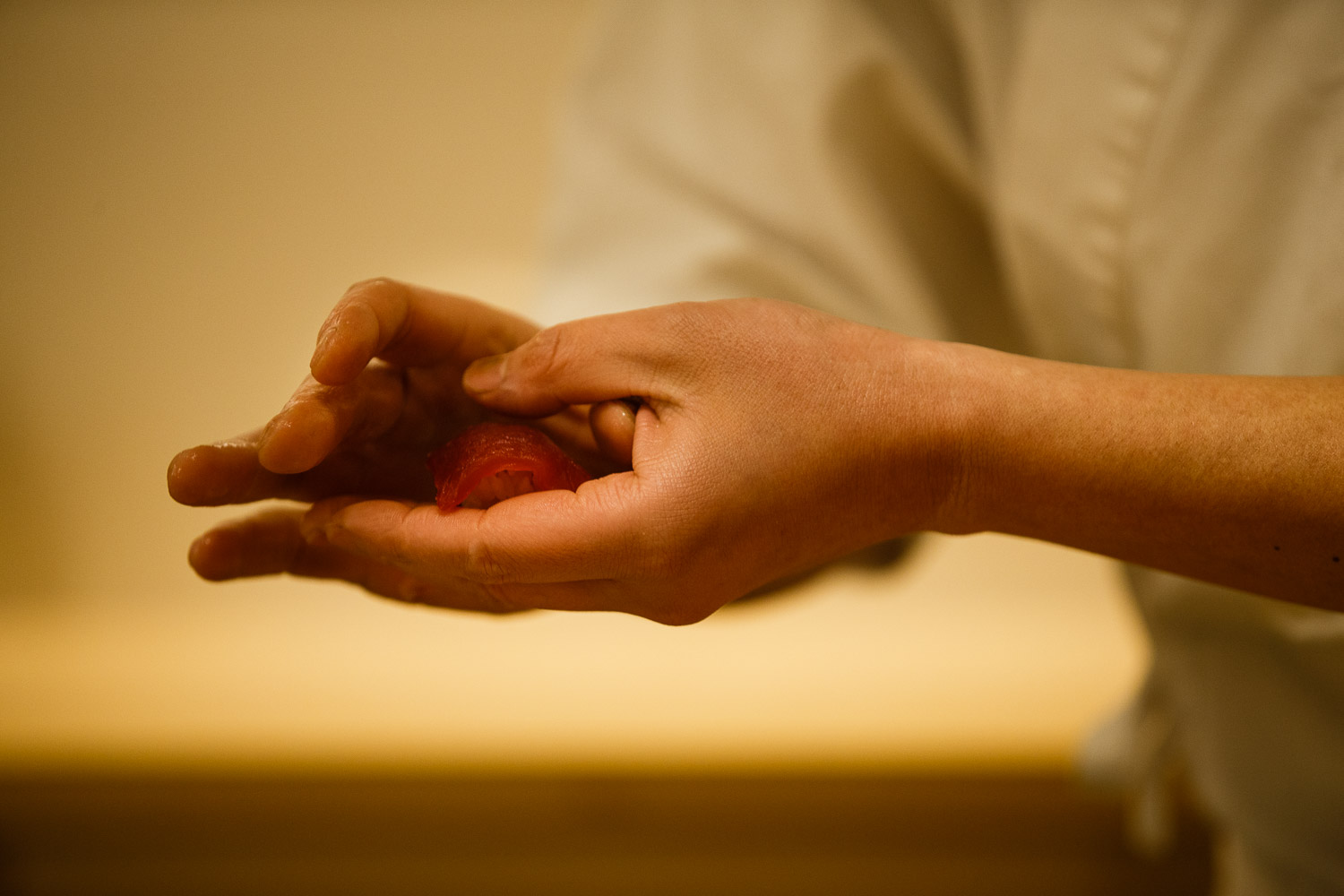
Aichi
Sushi Hijikata
鮨 土方
In the heart Nagoya’s entertainment district is a little sushi bar that offers a grand world of its own. The moment you step inside the restaurant, its elegant and still air sets the tone for the sophisticated meal to come. Serving only six guests at a time, the delectable menu is carefully curated to bring out the deepest flavors of local catches and seasonal delicacies.
After three relocations, Sushi Hijitaka has found its current home inside a busy commercial block in Sakae. Chef Akira Hijikata says that every move has created an opportunity for him to refine his focus on what he strives his restaurant to be. Disciplined and honest in nature, his heart has always been set on owning a place in his hometown, after having completed his decade-long apprenticeship in Tokyo.
Despite the small 33-square meter space, the well-curated interior makes the room feel open and pleasant. Set with a mix of wooden architecture and white motifs, the ambiance feels clean and crisp. The gorgeous counter and the shelves behind it are made from a plank of kiso hinoki wood. His mother’s calligraphy by the entrance offers a warm welcome to every guest.
Every evening, the restaurant offers two seatings of six guests, one at 6pm and another at 8:30pm. “The earlier slot is ideal for business dinners,” the chef explains. “But I recommend the later time for guests from overseas because I want to take my time in explaining each dish.”
Celebrating the rich variety of produce across Aichi Prefecture, his seasonal recipes feature rare ingredients like fresh octopus caught off the Himakajima Island. Be mesmerized by the level of craftsmanship and aesthetics of each dish that come served in breathtaking tableware. Handpicked from a selection of Arita, Karatsu and Tajimi-ware, every dish is paired with a special piece that bring out the beauty of the cuisine.
CUISINE
Deepest flavors of local catches and seasonal delicacies


CHEF
Akira Hijikata
SHICHIMI
For over seven years, Hijikata has been perfecting his recipe for homemade shichimi, seven-flavor chili pepper spice. His delicious mix is made of ichimi red chilli pepper, aged mikan orange peel, white pepper, black pepper, sansho peppercorn, dried shiso leaves and black sesame seeds. The orange peels add a great fragrance as well as make the blend more yellow rather than red. The aromatic seasoning is a wonderful condiment for small dishes as well as in miso soup that changes the flavor significantly. Many guests have become fans on this spicy mix, they often ask the chef if they can buy some to take home.
Course
- The price includes our booking fee of ¥8,000
- The price includes our booking fee of ¥8,000
Aichi
Sushi Hijikata
鮨 土方














